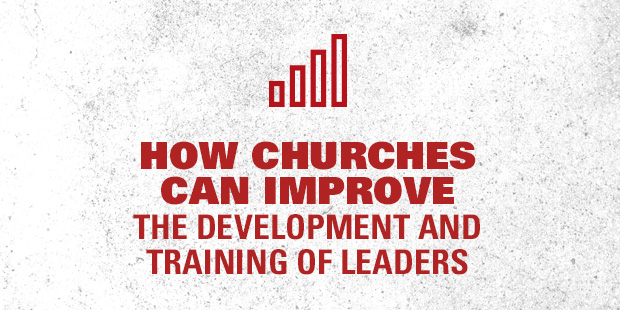
4 Keys for Developing a Vibrant Church Life Filled with Multiplying Leaders
Churches should be run by teams of volunteers—those committed to work together for the cause of Christ, serving one another and the world, because they have been gifted and called to do so.
Yet, this is an ongoing struggle for many churches. Perhaps it is an ongoing struggle for EVERY church.
Recently, I shared with my own church the kind of things we looked for in our ministry teams. It’s not perfect—and we’re not perfect—but we are looking for ministry teams that will be in partnership with the staff, will take ownership of areas of ministry, will be part of the fellowship of the church, and will be involved in apprenticeship to raise up new people to serve with them.
These four things—partnership, ownership, fellowship, and apprenticeship—are key for a church that is serving one another and a hurting world in the name of Christ. As such, let’s explore them one at a time.
1. Partnership
The first step to becoming a part of a ministry team is to exercise partnership.
At the beginning, most volunteers will speak of their ministry as “helping” a staff member—you want them to move beyond that and see their role as leading the ministry as a partner with the staff. They become co-laborers.
For example, at Grace Church, the church plant at which I am the teaching pastor, we have lay leaders who assist with finances. They become key ministry leaders by altering their definition and expectation of their ministry. Rather than being a helper to me or the executive pastor, they become a partner with the specific staff member managing the financial area of ministry for Grace Church. It’s their ministry now—we are partners.
This shift in mentality will bolster leaders’ sense of responsibility and encourage forward thinking rather than simply taking orders. Partners in ministry take charge, working together to recruit other partners and to plan and oversee weekly responsibilities.
2. Ownership
The second facet of key leaders is their ability and propensity to take ownership.
When people see themselves in ministry as empowered, they eventually own their ministries. They learn about it so they can do it better (and leads others in that ministry). In order to be most effective, key leaders discuss the vision with staff members, read books about successful practices, attend conferences or training events, or contact ministry workers from other churches who have established similar ministry areas. As a result of their study, key leaders will be equipped to provide confident, informed leadership of their area.
Sometimes, lay leaders may feel uncomfortable taking ownership because they do not wish to overstep a staff member’s job description. Sometimes staff are too insecure to let a non-pastor own a ministry. However, staff members who understand the importance of raising up key leaders should express their desire for ministry partners to take ownership under their headship. Staff members and key leaders need to view their roles as partners with staff members equipping and key leaders owning.
3. Fellowship
The third important area within key leadership is that of fellowship.
Ministry team members within the church must be involved in the small group ministry of your church. Everyone who is serving needs to be in community—one is not exclusive of the other. Even pastors need to be in small groups.
Small groups are not simply a tack on to the important ministry that takes place in the worship service and preaching. Rather, people who do not move from sitting in rows on Sunday morning to sitting in circles in an authentic community will likely drop out of church, not grow spiritually, and not connect with others.
Without that connectivity, individuals can go through incredibly difficult times and remain isolated and without support. Thus, key leaders must lead the way into genuine community with other believers. Ministry teams must see it as normal to be involved in small groups. That’s the only way they’ll know the people with whom they are partnering in ministry.
4. Apprenticeship
In partnering, pastors equip lay leaders to do works of ministry. Through that partnership, ministry teams and key leaders take up ownership and say, “I will lead; I will own this area.” Ministry teams and key leaders then model and live out fellowship by being involved in community.
The final significant aspect of key leaders is apprenticeship.
As churches continue to grow, more and more ministry team members must participate in ministry and resolve to become key leaders. Otherwise, the foundational group of key leaders will be unable to sustain the growing numbers of people to whom they minister. For example, if an outreach team of three helps a church of 200 remember to do outreach by planning events and mobilizing strategies, an outreach team of five or six will be needed to minister to a church of 300. Similarly, as the number of attending families grows, so must the number of children’s ministry leaders.
Thus, churches must think in terms of multiplication of ministry teams and key leaders—more in partnership, ownership, and fellowship. As ministry team members commit to become key leaders, they should look for other individuals to come alongside and instruct in their specific ministry role. Since roles will expand as a church grows, key leaders must recruit and train new leaders to step into expanding roles.
Apprenticeship toward partnership, ownership, and fellowship will lead to a vibrant church life filled with multiplying leaders.
A Vision for Developing Leaders
Pastors, ministry teams, and key leaders must work together to create a healthy leadership culture in which ministry teams members partner with staff members to provide intentional leadership over an area of ministry.
Within that ministry, key leaders must take ownership over its implementation and its multiplication by practicing apprenticeship with promising volunteers. As key leaders engage in partnership, ownership, fellowship, and apprenticeship, they will afford their ministry area room to grow, and, as a result, do their part to ensure the continued growth of the church.
That helps us to move beyond church as a spectator sport and to look more like 1 Peter 4:10 where, “based on the gift they have received, everyone should use it to serve others as good stewards of the manifold grace of God.”
Read more from Ed here.

















